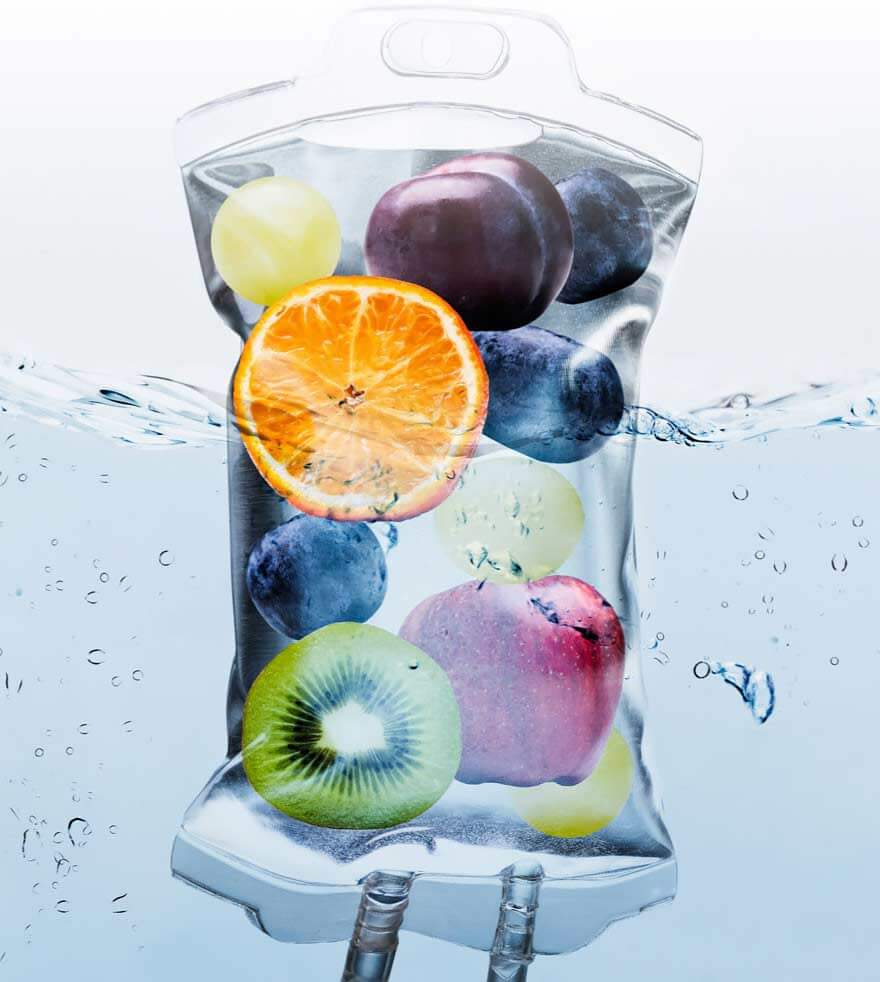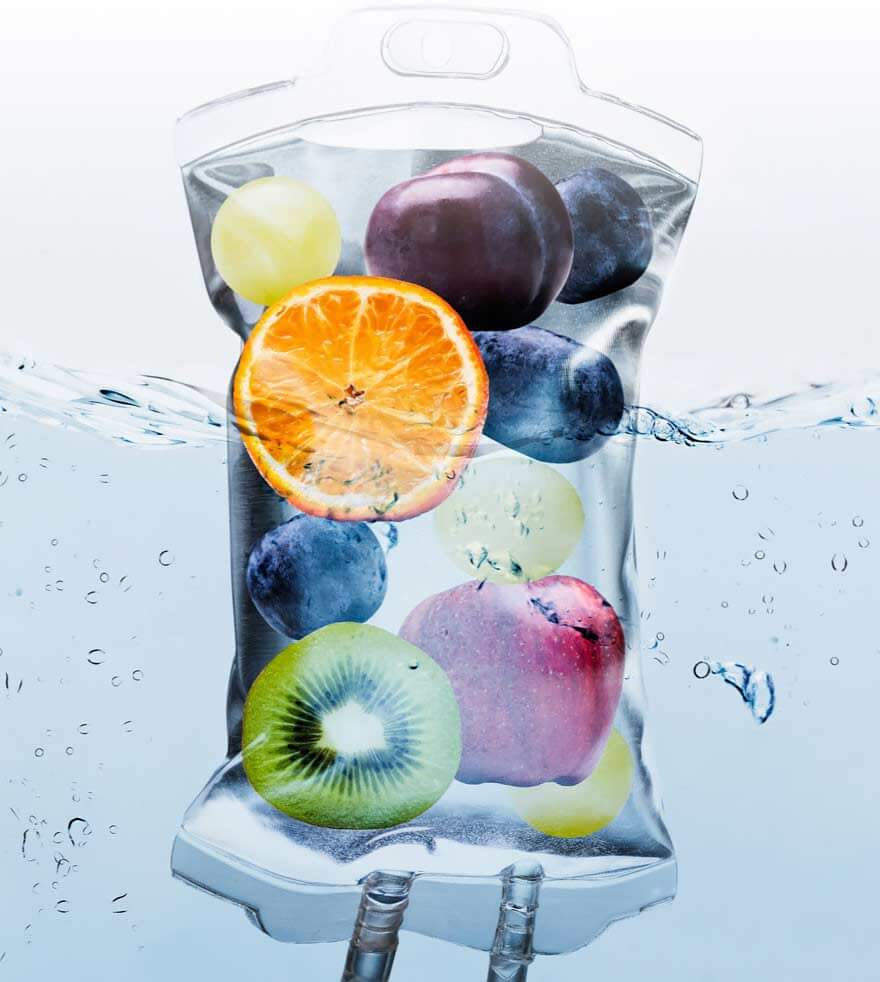All About NAD+
Nicotinamide Adenine Dinucleotide (NAD+)
ABOUT
Nicotinamide Adenine Dinucleotide (NAD+) occurs naturally in the body, it is the coenzyme of Niacin, also called Vitamin B3. It plays a major role in the chemical process of generating energy. NAD+ is a prevalent cellular electron transporter, coenzyme, and signaling molecule found in all cells of the body and is vital for cell function and viability. Simply put, NAD+ transforms the energy we eat from food into the energy our cells need for chemical reactions. Put it this way: without NAD+, we wouldn’t metabolize carbohydrates, fats, and proteins.
NAD+ is probably the most important co-factor for improving mitochondrial function. Mitochondria are intracellular organelles (a.k.a. “Energy powerhouses”) where micronutrients are converted to energy-rich ATP molecules for the cell. NAD+ helps the liver break down fats that are essential to provide energy for the body.
In addition to metabolism regulation, “NAD+ is a major player in skeletal muscle development, regeneration, aging, and disease,” describes an article in the journal Skeletal Muscle. Also according to the journal article, “The vast majority of studies indicate that lower NAD+ levels are deleterious for muscle health and higher NAD+ levels augment muscle health.”
The highest NAD+ levels are found in neonates and our NAD+ levels deplete as we age, unfortunately. They are around half of what they are in younger persons after age 50. As our levels decline, our metabolism changes. During metabolic activities, NAD+ is consumed by NAD+-dependent enzymes and which leads to the depletion of NAD+ levels over time. The age-related drop in NAD+ levels is caused by rising levels of CD38, a membrane-bound NADase that degrades both NAD+ and its precursor nicotinamide mononucleotide, according to a 2016 study in mice, which exhibit age-related declines in NAD+ levels similar to those seen in humans. The study also demonstrated that human adipose tissue from older adults (mean age, 61 years) expresses the CD38 gene at higher levels than that of younger adults (mean age, 34 years). Other research in mice, however, has shown that oxidative stress and inflammation brought on by aging lowers NAD+ production. Therefore, it is likely that a number of mechanisms work together to cause individuals to lose NAD+ as they age.
With suboptimal NAD+ levels, we may become prone to increased DNA damage, age-related illnesses and diseases, and mitochondrial malfunction. In fact, low NAD+ levels have recently been associated with a variety of age-related ailments and diseases linked to increased oxidative/free radical damage, including diabetes, heart disease, vascular dysfunction, ischemic brain injury, Alzheimer’s disease, and vision loss.
An article published in Cell Metabolism discusses studies that suggest that increasing NAD+ levels, “hold the promise of increasing the body’s resilience, not just to one disease, but to many, thereby extending healthy human lifespan.” Optimizing NAD+ levels has shown to increase cell vitality and enhance energy metabolism which may in turn support: anti-aging, cognition, health recovery, sports injuries, fatigue, mental clarity, mood, sleep, immune health, protection against oxidative stress, reducing inflammation and more.
IS THERE HOPE?
Fortunately, it is possible to replenish our NAD+ levels which may help manage a wide spectrum of diseases, ranging from diabetes to cancer, age-related changes, inflammation, fatigue and more. IV therapy may be used to infuse NAD+ directly into the bloodstream which, by bypassing your digestive system, may quickly restock the NAD+ levels in your body. In animal models, NAD+ repletion significantly increased lifespan, delayed the beginning of accelerated aging, and increased the number of proliferating stem cells in the germ line.
When it was recognized that pellagra, a condition marked by diarrhea, dermatitis, dementia, and mortality, could be treated with foods containing NAD+ precursors, particularly vitamin B3, the clinical significance of maintaining NAD+ levels was established in the early 1900s. Notably, the skin does not flush with NAD+ injection, in contrast to vitamin B3 (niacin) intake, which also causes this negative effect.
Since a 1961 report by Paul O’Hollaren, MD, of Shadel Hospital in Seattle, Washington, NAD+ IV infusion has been widely utilized for the treatment of addiction. In more than 100 instances, Dr. O’Hollaren detailed the effective use of IV-infused NAD+ for the prevention, relief, or treatment of acute and chronic symptoms of addiction to a range of substances, including alcohol, heroin, opium extract, morphine, dihydromorphine, meperidine, codeine, cocaine, amphetamines, barbiturates, and tranquilizers. NAD+-replacement therapy may encourage optimal mitochondrial function and homeostasis, genomic stability, neuroprotection, long life, and may help with addiction treatment.
Case studies of the use of NAD+ to treat drug addiction offered early information on side effects and safety. According to a 1961 study, patients with addiction who got NAD+ at a moderate IV drip rate (no more than 35 drops per minute) reported “no distress” but those who received it at a quicker drip rate complained of headache and shortness of breath. In this study, the dosage was 500–1000 mg per day for 4 days, then two injections every week for a month, and then one injection every two months as a maintenance dose. One of the two patients who had therapy reported experiencing constipation. In a 2019 study, a cohort of healthy male participants (n=11; NAD+ n = 8 and Control n = 3) aged 30-55 years had their safety of IV infusion of NAD+ evaluated using liver function tests (serum, total bilirubin, alkaline phosphatase, alanine aminotransferase, gamma glutamyl transferase, lactate dehydrogenase, and aspartate aminotransfer. Neither the NAD+ cohort nor the placebo (saline) cohort experienced any negative side effects throughout the 6 hour infusion.
SAFETY/INTERACTIONS
At the time of writing, there are no other reported contraindications/precautions for NAD+ injection. Individuals with known allergy to NAD+ injection should not use this product.
The safety of NAD+ injection has not been evaluated in pregnant women. Due to this lack of safety data, pregnant women should avoid NAD+ injection. The safety of NAD+ injection has not been evaluated in women who are breastfeeding or children. Due to this lack of safety data, women who are breastfeeding and children should avoid NAD+ injection.
At the time of writing, there were no reported interactions for NAD+ injection. It is possible that unknown interactions exist.
WHAT TO EXPECT
Clients have reported feeling flushed, anxious, headache, nauseated, light-headed, sinus pressure or congestion, shortness of breath, chest pressure and mild cramping. These side effects are very common and can best be explained by vasodilation and increased mitochondrial activity. Damaged cells are being repaired down to the mitochondrial level. Those with higher blood pressures and those of older age may experience more of the symptoms during infusion. Younger people seem to be less symptomatic during infusions and intrinsic NAD+ levels decrease with age which explains those of older age experiencing more symptoms.
During infusion, the rate can quickly and easily be adjusted and/or paused briefly if needed which will lessen the symptoms and/or make them go away. Typically, symptoms decrease with regular, consecutive NAD+ infusions. Symptoms typically go away after infusion is complete and clients report feeling more energized, more clear-minded and other benefits soon after their infusion. Our main concern is your comfort. We can adjust your drip to infuse as slowly as needed to maintain your comfort.
References:
Goody MF, Henry CA. A need for NAD+ in muscle development, homeostasis, and aging. Skeletal Muscle. 2018 Mar;8(1):9. DOI: 10.1186/s13395-018-0154-1.
iDrip Therapy Reference Manual
Schultz MB, Sinclair DA. Why NAD(+) Declines during Aging: It's Destroyed. Cell Metab. 2016;23(6):965–966. doi:10.1016/j.cmet.2016.05.022.





